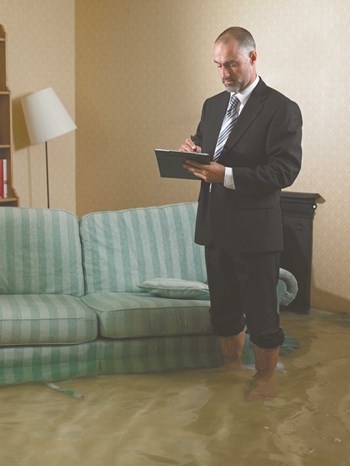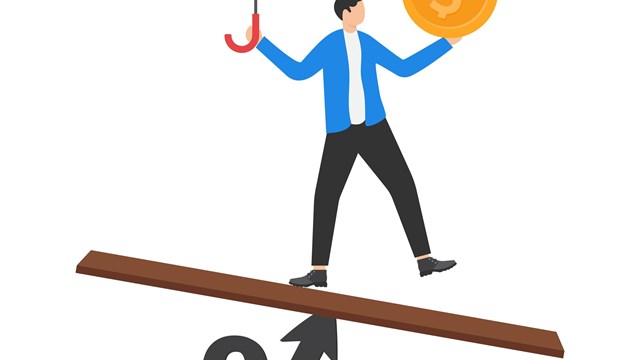
Imagine the panic that sets in when a home is lost or damaged. Now imagine navigating through that fear alone. Whether it’s fire or flooding or the violent effects of a storm, anything that damages or destroys a home will have a lasting and dramatic effect on the people who lived and worked in that space.
Sometimes making the insurance claim that’s meant to return to people the financial and physical security they need can add just as much stress to the situation as the original disaster. Panicked, homeowners might not realize how much coverage they truly have or how much is due to them from that claim. One of the best ways to avoid this problem is to enlist the aid of a public insurance adjuster.
Although public insurance adjusters are less well known to the average insurance customer than insurance agents or brokers, they have played a vital role in the insurance process since nearly day one. When trouble hits, adjusters will step in as advocates of the insured, working with insurance companies to get a fair and accurate settlement for their client. With extensive knowledge and training, adjusters are ideally suited to serving as a go-between among individuals or businesses and the insurance companies, helping people navigate the sometimes-tricky world of policies and settlements.
Ultimately, adjusters ensure that their clients receive all of the compensation to which they are entitled—a valuable service when people depend on these resources to rebuild their futures.
“Most clients who hire us do so for our expertise, and the fact that we represent them,” says Joseph Charrier, regional vice president for Adjusters, Inc., in Portland, Maine. “The insurance company adjuster works for the carrier, not the insured. It’s the insured’s duty to document, and present their claim to the insurance company. We assist with that process. The policy dictates what you must provide to the carrier, and failure to follow that process could result in loss of benefits.”
Stepping Into the Fray
Typically, an adjuster can be called in to help with a situation anywhere from two minutes to two years after the fire has cooled or the floodwaters have receded. As soon as the dust settles after an accident or incident, policyholders should consider calling an adjuster.
“We get involved in the process almost immediately,” says David Barrack, executive director of the National Association of Public Insurance Adjusters (NAPIA). “We’re there as soon as the property is damaged or as soon as the client calls us.” Adjusters can lend a hand in a variety of instances ranging from flood, collapse, fire or explosions to hurricane and wind damage, riot or civil unrest, smoke damage and vandalism or theft, according to the NAPIA website.
Once the adjuster is on the job, he or she will attend to an enormous range of tasks. The adjuster, says Leonard Theran, SPPA, president of Professional Loss Adjusters, Inc. in Newton, Massachusetts, will “perform a thorough review and analysis of the insurance policy to determine what is required to maximize the recovery; assist the association and unit owners in making the critical decisions that will affect their property as a result of the loss; and advise them as to how they can maximize the coverage in their insurance policy to enable them to recover as soon as possible.”
Once on the scene, the adjuster will begin the measurement process to assess the level of damage, figuring out what it will take to get the home back to its original shape—before the catastrophe occurred. To reach that point, Theran says, the adjuster will “make an on-site analysis of the building damage and prepare a detailed estimate of the cost to reconstruct the property, attend to the detail work of a property, business interruption, and extra expense claim, and present and support an itemized claim package to the insurance company.”
The adjuster also will do an inventory of the home, and will even set up accommodations for displaced families, arranging for hotel stays and other necessities. “Once it’s determined coverage has been afforded, we then scope the building to prepare our building estimate. If business or personal property is involved, we then inventory the damaged items with the insured’s help,” Charrier adds. “We separate the damaged items, list in detail the quantity, and description. We list any items that need to be cleaned/restored and then we price each item.”
It often can take an outside expert—someone divested from the emotional or purely financial aspect of the situation—to come in and render an evaluation that will suit both sides. “After the building/contents estimates are submitted to the insurance company, we generally will do a walk through with the company adjuster to see if we can agree upon what's been damaged, if we can agree then the negotiation process starts. If they have business interruption coverage, that gets settled last by our team of accountants,” Charrier says.
Having an adjuster in the mix can also help speed up the process—which can take eight to 12 weeks. As an insurance expert, the adjuster will speak the same language as the insurance company or agent. “Our goal,” Charrier says, “is not to argue, but to expedite the insurance claim process in a fair and precise manner. It's really no different than having an accountant do your taxes.”
When policyholders face the hard facts of home damage or other issues and find themselves turning to an adjuster, they will not have to worry about paying their adjuster out of pocket. Most adjusters are paid out of the funds recovered from the insurance company, taking an agreed upon percentage of the payout. “Public adjusters are compensated by a contingent fee of usually 10% of what is collected. It’s paid after the insured has been paid, and it’s paid by the insured,” Charrier explains.
As with any other important decision, insurance policy holders want to be sure they’re hiring an adjuster they feel comfortable with. “There is no charge for an initial consultation, during which we try and educate the prospective client as to the process and what they can expect,” Theran notes.
“The difference between firms can be huge,” Charrier says. “Some ‘firms’ work out of their kitchens, or their cars, without benefit of an office, or support staff. The client will never know unless he asks. It’s also wise to check references on past losses that the firm has handled. The number of years in business is another factor in choosing someone to handle your loss... The bigger firms have resources to handle inventory, loss of business, and building estimate by personnel that's on staff—thus providing a timely, quality work product, to ensure your loss is documented properly. Do your homework; check out who you are going to hire to handle this important financial decision which could affect your future,” he advises.
Ready to Get in the Ring
Adjusters undergo many years of training, similar to insurance agents and other insurance professionals. “We learn insurance practices, have knowledge of policies and state laws,” Barrack says. Organizations such as NAPIA provide professional training and certification. Just to become a member of the organization requires two years of full-time, on-the-job experience.
To become a certified professional public adjuster (CPPA) requires five years of experience, a college degree and the ability to pass an exam. With ten years of experience, people are eligible to become senior professional public adjusters (SPPA). Every state is different, however, and some require proof of continuing education courses in order for adjusters to maintain their licenses. The licensing law in Massachusetts, for example, “requires a two-year apprenticeship unless the public adjuster has prior insurance experience,” Theran explains.
Many public adjusters have previously worked for insurance companies, he notes, and “some grew up in the family business.”
“It’s rare to have never worked in the insurance industry, and then become a public adjuster,” Charrier agrees. “However,” he adds, “that's how I did it. I've only been a public adjuster, and I've been one for 25 years. I'm also licensed all over the country. The average public adjuster that I am familiar with has many years of experience.”
Luxury or Necessity?
Some in the insurance industry would argue that adjusters are more of a helpful, once-in-a-while measure rather than a necessity for each and every policyholder.
“We use adjusters very infrequently—usually only when a loss is relatively large and complicated,” says Alex Seaman of HUB International Northeast, an insurance firm in Woodbury, Long Island. “Otherwise, there’s no real reason why claims can’t be settled between the carrier and the policy holder.”
An adjuster can be helpful, Seaman says, in handling the paperwork and explaining the finer points of a policy to the policyholder. He cautions, though, that sometimes “having an adjuster can be counterproductive. There’s no reason to pay a fee to the adjuster if you don’t have to.”
There’s a possibility, too, that adding a third party to the client/ insurer relationship could complicate matters. “An insurance carrier might assume you’re looking for something that perhaps you’re not entitled to under your policy,” perhaps creating a sense of mistrust, Seaman says. “But if a claim is very large and complicated, it can be very helpful to have an adjuster involved.”
Most adjusters, however, feel that their role is to bring harmony to the relationship between the carrier and the insurer. Sometimes the most challenging part of the job is just trying to get everyone on the same page. “The insurance policy is complicated and the adjusting process is not straightforward,” Theran says. “Most people make the wrong assumptions about both and the ramifications of that fact can result in unhappiness and delays until everything is straightened out. A good public adjuster can expedite the settlement by presenting the insurance company what it needs to make the appropriate decisions in the shortest time. Many company adjusters privately tell us that they prefer to have a public adjuster to deal with because they know that we'll submit a claim that is coherent and defensible. Adjusters recognize that it's our objective as well to bring the loss to a conclusion to the satisfaction of all concerned.
“Insurance companies are in business to make a profit. While they want to be fair, there can be a considerable difference in the opinion as the amount of the loss. On several occasions, we have achieved settlements in excess of ten times the initial offer by being extremely diligent in pursuing the claim. The insurance policy is complicated and many terms are not defined or adequately explained. Our knowledge of the policy can lead to benefits to the insured that would otherwise be overlooked,” Theran says.
Ultimately, it’s up to each individual to decide whether or not they need an adjuster. “The benefits for retaining a public adjuster are very simple,” Charrier says. “We are experts at the insurance policy, how it works, and documenting claims. We are hired to basically do two things: insulate you from the grief and unknown of dealing with the insurance process, and make sure you get what you are entitled to under the terms of your insurance contract. In any insurance claim, the burden of proof is upon you (the policy holder) not the insurance company. The policy is a contract of adhesion, and it needs to be followed as described within the policy.”
For the most prudent, organized folks out there, having the number of an adjuster side-by-side with their policy in their home lockbox could be helpful in the future. They can find a good adjuster by referencing professional sites such as the one maintained by NAPIA (www.napia.com). “It doesn’t hurt to become informed and to become familiar with an adjuster in your area,” Barrack says. “It’s never a bad idea to be prepared.”
The Human Factor
For many adjusters, the hardest part of their job often turns out to be the most rewarding. Interacting with individuals and families who have just suffered great loss can be hard, as it was for the thousands of adjusters who worked with victims of Hurricane Katrina a few years ago, or more recently, with the victims of flooding in the Midwest and tornadoes here in the Northeast this year.
“Dealing with the insured at a time of loss can be a difficult proposition because of that loss—perhaps even the loss of family members,” Barrack says. “So there are personal issues” involved in the job.
At the same time however, working with those families can make the whole process worth it, and having a professional advocate on their team can be a boon to owners who have suffered a loss, Theran says. “There can be a great deal of stress involved after a loss. I think one of the major benefits we provide is to take much of the uncertainty out of the process and relieve our client of the burden in preparing and negotiating a claim. The client can then focus on the recovery process.”
For the homeowner, it helps to know that someone is out there doing what they can to get them back home and living that normal life again. With the backing of an insurance agent and the helpful guidance of an adjuster, the pain of home damage or loss should only be temporary. Working together, the adjuster should have the homeowner and their family back on the road to recovery and heading in the direction of a very happy ending.
Liz Lent is a freelance writer and a frequent contributor to New England Condominium. Editorial Assistant David Chiu also contributed to this report.






Leave a Comment